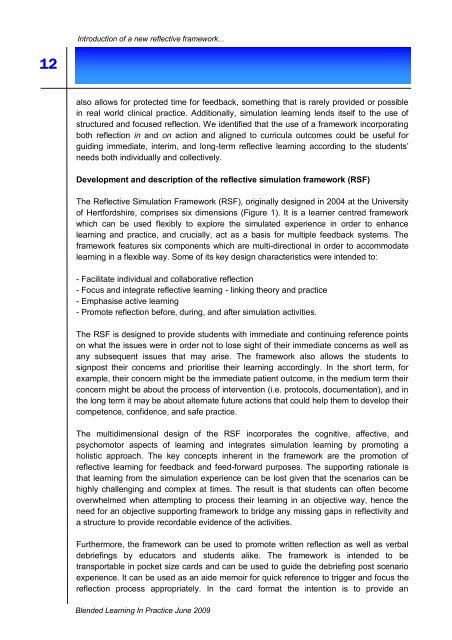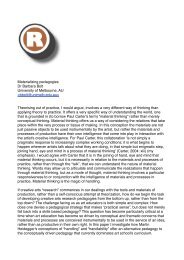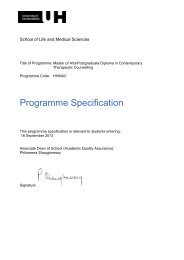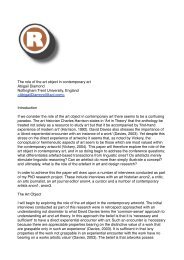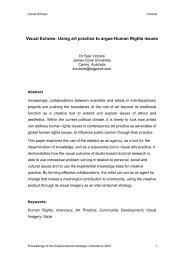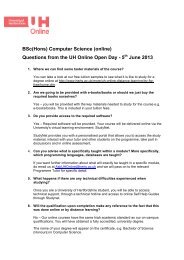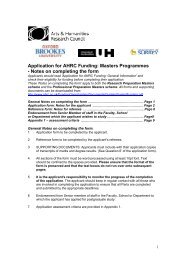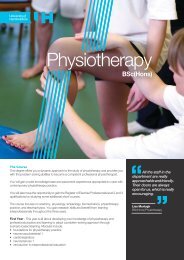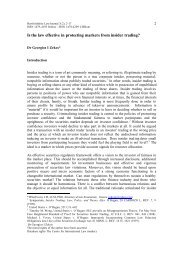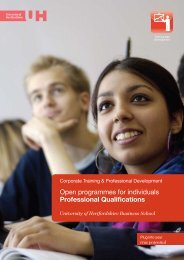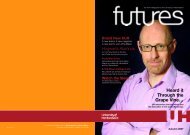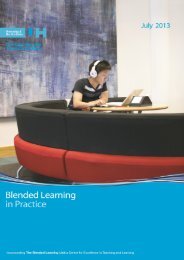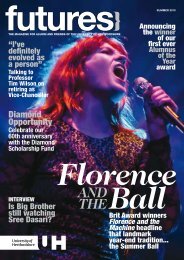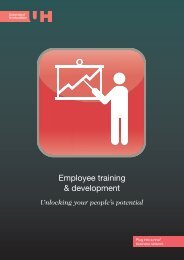June 2009 - University of Hertfordshire
June 2009 - University of Hertfordshire
June 2009 - University of Hertfordshire
You also want an ePaper? Increase the reach of your titles
YUMPU automatically turns print PDFs into web optimized ePapers that Google loves.
Introduction <strong>of</strong> a new reflective framework...<br />
12<br />
also allows for protected time for feedback, something that is rarely provided or possible<br />
in real world clinical practice. Additionally, simulation learning lends itself to the use <strong>of</strong><br />
structured and focused reflection. We identified that the use <strong>of</strong> a framework incorporating<br />
both reflection in and on action and aligned to curricula outcomes could be useful for<br />
guiding immediate, interim, and long-term reflective learning according to the students‟<br />
needs both individually and collectively.<br />
Development and description <strong>of</strong> the reflective simulation framework (RSF)<br />
The Reflective Simulation Framework (RSF), originally designed in 2004 at the <strong>University</strong><br />
<strong>of</strong> <strong>Hertfordshire</strong>, comprises six dimensions (Figure 1). It is a learner centred framework<br />
which can be used flexibly to explore the simulated experience in order to enhance<br />
learning and practice, and crucially, act as a basis for multiple feedback systems. The<br />
framework features six components which are multi-directional in order to accommodate<br />
learning in a flexible way. Some <strong>of</strong> its key design characteristics were intended to:<br />
- Facilitate individual and collaborative reflection<br />
- Focus and integrate reflective learning - linking theory and practice<br />
- Emphasise active learning<br />
- Promote reflection before, during, and after simulation activities.<br />
The RSF is designed to provide students with immediate and continuing reference points<br />
on what the issues were in order not to lose sight <strong>of</strong> their immediate concerns as well as<br />
any subsequent issues that may arise. The framework also allows the students to<br />
signpost their concerns and prioritise their learning accordingly. In the short term, for<br />
example, their concern might be the immediate patient outcome, in the medium term their<br />
concern might be about the process <strong>of</strong> intervention (i.e. protocols, documentation), and in<br />
the long term it may be about alternate future actions that could help them to develop their<br />
competence, confidence, and safe practice.<br />
The multidimensional design <strong>of</strong> the RSF incorporates the cognitive, affective, and<br />
psychomotor aspects <strong>of</strong> learning and integrates simulation learning by promoting a<br />
holistic approach. The key concepts inherent in the framework are the promotion <strong>of</strong><br />
reflective learning for feedback and feed-forward purposes. The supporting rationale is<br />
that learning from the simulation experience can be lost given that the scenarios can be<br />
highly challenging and complex at times. The result is that students can <strong>of</strong>ten become<br />
overwhelmed when attempting to process their learning in an objective way, hence the<br />
need for an objective supporting framework to bridge any missing gaps in reflectivity and<br />
a structure to provide recordable evidence <strong>of</strong> the activities.<br />
Furthermore, the framework can be used to promote written reflection as well as verbal<br />
debriefings by educators and students alike. The framework is intended to be<br />
transportable in pocket size cards and can be used to guide the debriefing post scenario<br />
experience. It can be used as an aide memoir for quick reference to trigger and focus the<br />
reflection process appropriately. In the card format the intention is to provide an<br />
Blended Learning In Practice <strong>June</strong> <strong>2009</strong>


